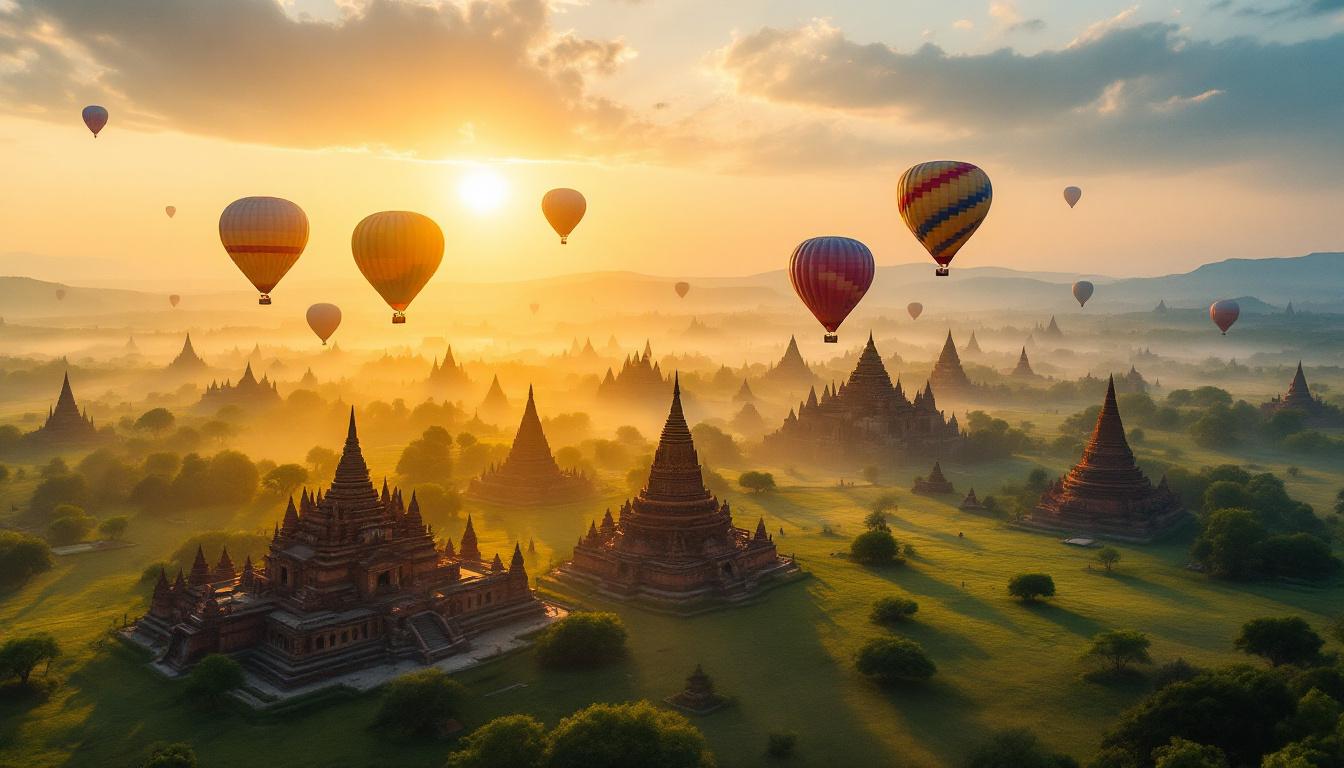While millions crowd into Cambodia’s famous Angkor Wat, paying $62 for a three-day pass and fighting for sunrise photos, Myanmar’s ancient capital of Bagan offers something extraordinary. This sacred city holds over 2,000 surviving temples from an original 10,000, spread across misty plains where hot air balloons drift at dawn.
I’ve explored both archaeological wonders extensively, and Bagan consistently delivers what Angkor Wat promises but struggles to provide: authentic spiritual encounters without the suffocating crowds. Here’s why this Myanmar treasure outshines its famous Cambodian counterpart in every meaningful way.
The numbers tell a compelling story of value and authenticity that transforms how you experience ancient Buddhist heritage.
Why Angkor Wat disappoints modern travelers
Overwhelming crowds destroy the spiritual atmosphere
Angkor Wat receives over 2 million visitors annually, creating human traffic jams at sunrise viewpoints and constant jostling for photographs. The mystical experience vanishes when you’re surrounded by hundreds of selfie sticks and tour groups shouting over ancient stone carvings.
Commercial tourism has stripped away cultural authenticity
Siem Reap’s aggressive tuk-tuk drivers, overpriced restaurants targeting tourists, and sanitized temple experiences feel more like a theme park than a sacred archaeological site. Local Khmer culture gets buried under layers of commercial tourism infrastructure designed for maximum profit extraction.
Bagan’s superior advantages create unforgettable experiences
Incredible value with temple passes costing 85% less
Bagan’s week-long temple pass costs just $10 compared to Angkor’s $62 three-day pass. Accommodation ranges from $20-100 per night versus Siem Reap’s inflated prices. Local meals cost under $5, and e-bike rentals for temple hopping run just $8 daily.
Exclusive hot air balloon experiences over temple plains
Nothing compares to floating silently over Bagan’s 42-square-kilometer archaeological zone at sunrise, watching golden light illuminate thousands of ancient spires. These balloon rides, impossible at Angkor Wat, offer perspective shots that reveal the true magnificent scale of this temple city.
Living culture integration that Angkor Wat cannot match
Active Buddhist worship continues in functional temples
Unlike Angkor’s museum-like atmosphere, many Bagan temples remain active places of worship where local pilgrims make merit offerings alongside respectful tourists. You’ll witness authentic Buddhist ceremonies, not staged cultural performances designed for foreign cameras.
Village life flourishes among ancient monuments
Farmers tend crops between temple ruins while artisans craft traditional lacquerware using 500-year-old techniques. This living archaeological landscape means encountering genuine Myanmar culture rather than tourism-dependent communities that have lost their authentic character.
Practical benefits that matter most for travelers
Dispersed temple layout eliminates oppressive crowding
Bagan’s temples spread across vast plains rather than concentrating in single complexes, naturally distributing visitors and creating intimate exploration opportunities. You can spend entire mornings discovering hidden temples without encountering another tourist.
Ideal climate timing coincides with Southeast Asian travel season
November through February offers perfect cool, dry weather for temple exploration, coinciding with Bagan’s peak season when hot air balloon companies operate daily flights. The timing aligns perfectly with winter escapes from Northern Hemisphere cold.
Frequently asked questions about Bagan versus Angkor Wat
How do temple preservation efforts compare between sites?
Bagan actively maintains temples for continued religious use while implementing careful conservation. Angkor focuses primarily on archaeological preservation with less emphasis on living cultural practices.
What makes Bagan’s sunrise experience superior to Angkor Wat?
Hot air balloon rides provide unique aerial perspectives impossible at Angkor, while multiple temple terraces offer diverse sunrise viewpoints without competing crowds.
Are Myanmar travel restrictions more complicated than Cambodia?
Both require visas, but Myanmar’s 2024-2025 tourism surge indicates streamlined processes. Bagan specifically reports no safety concerns for international visitors.
How does local food compare between destinations?
Bagan’s authentic Burmese cuisine costs significantly less than Siem Reap’s tourist-oriented restaurants, with traditional tea leaf salad and mohinga available from local vendors for under $3.
Bagan delivers everything travelers seek in Angkor Wat—ancient Buddhist heritage, stunning architecture, spiritual atmosphere—without the crowds, inflated prices, or commercialized tourism experience that diminishes Cambodia’s famous site.
Book your Myanmar adventure during peak season from November to February when cool, dry weather creates perfect conditions for temple exploration and those unforgettable sunrise balloon flights over humanity’s most remarkable concentration of sacred architecture.
